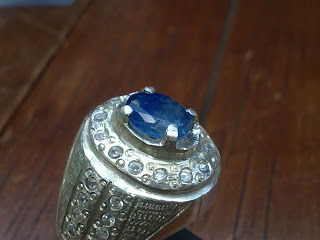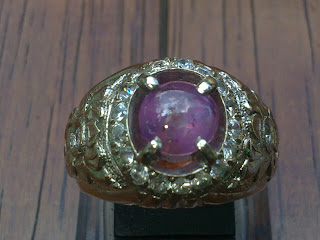Sapphire as The Most Wanted Gemstone
>> Wednesday, June 13, 2012
 |
| Blue Sapphire |
Sapphire and Ruby are the same material, the corundum mineral. The corundum is the second hardest gemstone after diamond. Red color corundum is known as ruby. All other colors of corundum are referred as sapphire.
Blue is the most famous color type of sapphire. The very expensive Kashmir and Burmese sapphires have relatively deep intense blue color. The blue Kasmir sapphires are quite rare on the market today. Sri Lankan and Madagascar sapphires have become the most commonly seen today. Other producers of blue sapphire are Australia, Tanzania, Thailand, Cambodia, and the USA.
Sapphire has many variety of colors such as purple, yellow, orange, pink, black, green, and colorless. Purple sapphire is very rare, found in Sri Lanka and Tanzania. Much yellow sapphire is around the lighter side. Heat treatment can produce a more intense yellow golden color, and beryllium-treated sapphire may be create a brilliant yellow. One special color of sapphire is orange-pinkish called Padparadscha. Derived from the the Sinhalese word means lotus flower, this kind of sapphire is very expensive. This unusual sapphire color should have a pink and orange color simultaneously. But sometimes, many gems seller will say orange saphire as padparadscha. A true padparadscha will always have a hint of pink. Sapphires that appeargreen contain a little bit color of blue and yellow, which may bevisible beneath the microscopic lense.
 |
| Pink Star Sapphire |
The most typical treatment method for this corundum is heat treatment. The gemstones are heated, normally just before they are cut. Most sapphires today are heated. Blue sapphire which are rich of blue and not heated can have tremendous prices. Some blue sapphires can also get diffusion treatment. Actually, this treatment is more common for star sapphires. Beryllium treatment methods are now being used to create spectacular orange and red colors that were rarely seen on the market.
Read more...





